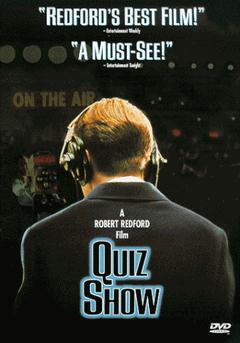
 |
1955 - June 7 $64,000 Question premiered on CBS, sponsored by Revlon and its new ad agency Norman, Craig & Kummel, from the idea of Steve Carlin based on the radio show Take It or Leave It. Imitators quickly followd, such as The Big Surprise, The $64,000 Challenge, Treasure Hunt
1956 - Twenty-One was sponsored by Geritol, honest at first, hosted Jack Barry, but lacked excitement and drama
1957 - $64,000 Question was the No. rated show on television, with an ARB rating of 35.2; Herb Stempel lost to Charles Van Doren on Twenty-One due to fix arranged by producer Dan Enwright
1958 - Dotto scandal; Stempel decided in August to tell his story to newspaperman Jack O'Brien; investigations by New York assistant DA Joseph Stone; 9-month grand jury, 150 witnesses; Van Doren lied under oath
1959 - Congress held hearings, Patty Duke lied at first but then told the truth about being coasched when she was a 12-year old contestant; Charles Van Doren admitted to fixing Twenty-One; payola scandal of payments made to disk-jockeys; CBS President Frank Stanton announced new series of documentaries, starting with CBS Reports produced by Fred Friendly; Stanton also promised to identify canned laugh-tracks and applause (but dropped this idea after a few weeks); networks substituted telefilms for quiz programs
1960 - Robert Drew of Time, Inc. and cameraman Richard Leacock, who had worked with Robert Flaherty on Louisiana Story, used shoulder-held 16mm camera synched to a portable tape recorder to follow John Kennedy and make the cinema verite film Primary; Leonard Goldenson of ABC hired Drew to make the Close-Up documentaries (such as Yanki No!) sponsored by Bell & Howell, and Drew pioneered wireless microphones and crystal-controlled motors for wireless synch, thus eliminating the umbilical cord between camera and soundman; David Wolper produced The Race for Space; In November, NBC White Paper produced the U-2 Affair documentary and CBS made Harvest of Shame; all network documentary units swith from 35mm to 16mm camera equipment
1961 - Kennedy appointed Edward R. Murrow to head the USIA, Newton Minow to head the FCC; NBC in March made The Real West, and NBC White Paper hired Robert Young to produce Sit-In and Angola; Jay McMullen in November made Biography of a Bookie Joint for CBS with a concealed 8mm camera
Next - Split-Personality TV